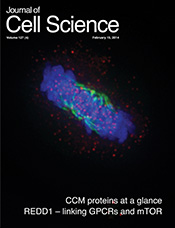Novel insights into the recruitment of checkpoint proteins to the kinetochore
The proper distribution of chromosomes to the two new daughter cells depends on the spindle assembly checkpoint (SAC). Failure in the checkpoint results in aneuploid cells that is a hallmark of solid tumors and complicates treatment in the clinic. The movement of chromosomes to the new daughter cells requires binding between microtubules of the mitotic spindle and large protein structures on the chromosomes referred to as kinetochores. The SAC is able to detect improper attachments between kinetochores and microtubules, which requires the interaction of SAC proteins and kinetochore proteins. Currently our understanding of how SAC proteins are recruited to kinetochores is limited.
Work from the Nilsson lab now provides detailed insight into how the Bub1 and BubR1 checkpoint proteins bind the large outer kinetochore protein KNL1. It is shown that KNL1 contains multiple binding sites for these proteins in the form of phosphorylated MELT repeats. A balance in the activities of the Mps1 kinase and Protein Phosphatase 1 (PP1) regulates the phosphorylation state of the MELT repeats. Surprisingly the MELT repeats of KNL1 are highly redundant and a minimal number of repeats supports proper chromosome segregation.
 Title:
Title:
A minimal number of MELT repeats supports all the functions of KNL1 in chromosome segregation
Authors:
Gang Zhang, Tiziana Lischetti and Jakob Nilsson
